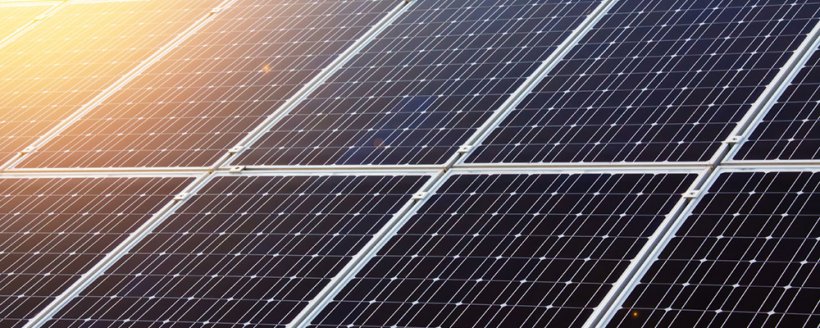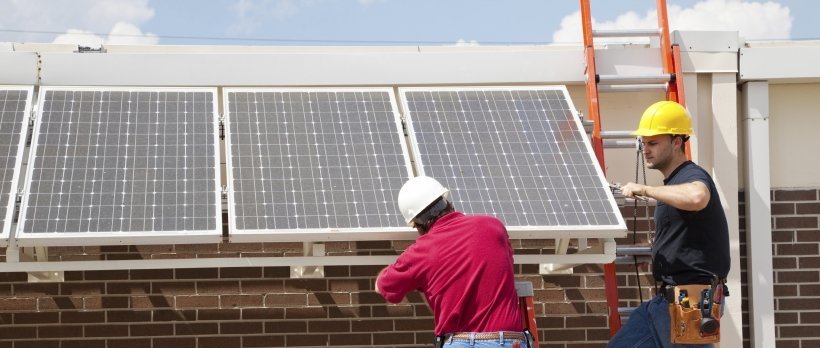Taking advantage of a solar power rebate or other solar energy incentive can make all the difference. The price of solar power has dropped dramatically over the past decade, but solar incentives are still the best way to ensure a reasonable payback period (the time it takes your electricity savings to cover the cost of your solar panels).
The two main factors that have contributed to lower costs in the solar industry are:
1. Advances in solar technology
2. Government rebates and other incentives
You probably can’t do much to affect solar technology. You can, however, take advantage of every solar energy incentive available to you. We’ll make sure you’re familiar with these incentives so you don’t miss out on any ‘free money’.
The specific details of various incentives will differ depending on where you live, but the following incentive categories remain fairly consistent:
- Solar Power Rebate
- Solar Tax Credit
- Performance Based Incentive (PBI)
- Tax Exemption

Solar Power Rebate
A solar energy rebate usually refers to a one-time payout you receive from a utility, municipal government, state government, or federal government when you install solar panels.
For United States residents the best way to find out which solar rebates are available to you is to check out something called the Database of State Incentives For Renewables & Efficiency (DSIRE for short).
DSIRE is the ‘go-to’ list for government incentives and policies that promote renewable energy. It was established in 1995 and it is funded by the U.S. Department of Energy. When you go to the DSIRE website just enter your zip code or click on your state to check out all the programs available to you.
Solar Tax Credit
A solar tax credit can have a big impact on the cost of your solar panel installation. Although you might have to wait until tax time to get your hands on the money, it can represent a huge reduction in the overall cost of your solar power system. A tax credit is usually more valuable than a tax deduction since it reduces your tax bill dollar-for-dollar instead of reducing only a percentage of the taxes you owe.
Investment Tax Credit (Federal Solar Tax Credit)
People in the US are able to take advantage of the Investment Tax Credit (also known as the Federal Solar Tax Credit). This is currently a 26% tax credit (although it will be reduced to 22% for 2023). This solar tax credit can reduce the cost of your solar panel installation by thousands of dollars. For instance, if you spent $10,000 on a new solar panel array and took advantage of the 26% tax credit, you would reduce your taxes owed by $2,600.
Also, there is no maximum amount that can be claimed and the Federal Solar Tax Credit applies to the full amount you paid for your solar panel installation. This includes:
- Solar Panels
- Installation Costs
- Balance of System Equipment (wiring, inverter, mounting)
- Energy Storage Devices
- Sales Tax on Eligible Expenses
To sweeten the deal, state rebates and tax credits generally do not reduce the amount of the federal tax credit you receive. This means you may not have to subtract any state or local incentives you receive before you calculate the 26% tax credit (none of this should be considered tax advice, of course).
The following are the main eligibility requirements for the federal solar tax credit:
- You own the solar power system
- The system was installed between January 1, 2006, and December 31, 2023
- The solar panels are installed at your primary or secondary residence
- The solar power system is new
Suffice it to say, the federal solar tax credit doesn’t have a lot of small print. If you jump through the hoops, you can actually reduce the total cost of your solar panel installation by 26%. That’s a fairly significant savings, wouldn’t you say?
Performance Based Incentive (PBI)
Unlike the federal solar tax credit that is based on the cost of your system, a performance based incentive (PBI) is based on how much electricity your system actually produces. Some form of metering is required to measure the output of your system in order to calculate your incentive.
Examples of PBIs include:
- Solar Renewable Energy Certificates (SRECs)
- If you live in an eligible market, you can earn 1 Solar Renewable Energy Credit (SREC) for every megawatt hour your solar power system produces. For reference, a 10kW solar system should produce around 12 SRECs per year. What can you do with the SRECs you earn? You can sell them to a utility company that needs to meet its renewable energy quota. How much you can sell them for is a little more complicated. This depends on the market for SRECs where you live and can vary from a few bucks to several hundred dollars per SREC. Check out the SREC market here.
- Feed-In Tariff (FIT)
- A FIT requires a utility company to purchase renewable electricity from people in their service area. This often takes the form of a long-term contract that guarantees a certain rate for each kilowatt hour of electricity produced. The FIT is designed to promote the adoption of renewable energy technologies.

Tax Exemption
Tax exemptions work differently than the tax credits we discussed earlier. A tax exemption reduces your taxable income, whereas a tax credit directly reduces your tax bill dollar for dollar. The following are the two kinds of tax exemptions that may be available when you install solar panels:
- Property Tax Exemption
- Installing a solar power system will likely increase the value of your home. This could mean a higher property tax bill. Fortunately many states have property tax exemptions for solar energy. This means you won’t have to deal with an increased property tax bill due to installing solar panels.
- Sales Tax Exemption
- Many states offer sales tax exemptions for solar energy systems. This reduces the upfront cost of the system by exempting solar energy devices and installation from sales tax.
When Should I Go Solar?
Now that we’ve taken a look at the various solar financial incentives available, it might be worthwhile to consider the issue of timing. Since the cost of solar panels has come down drastically over the last decade, some people think it is a good idea to delay a solar installation to let prices drop further.
As the price of a solar installation drops, however, governments tend to scale back their solar incentive programs. For example, the federal solar tax credit started at 30% and has been reduced to 26%. In 2023 it will be reduced to 22%.
Solar power rebates and tax credits are generally designed to allow the solar industry to get established. The idea is that the incentives will no longer be required when the industry brings its costs down through economies of scale.
In other words, don’t wait too long to go solar because the solar power rebates we see today weren’t meant to last!
Conclusion
Hopefully you’ve been able to find a solar power rebate and incentive that will reduce the cost of your solar installation. Make sure you do your homework and discuss available incentives with a qualified solar installer in your area. It could save you thousands of dollars!
If you’ve reduced your costs as much as possible and you’re still wondering how you will pay for your panels, check out our page on solar financing.
